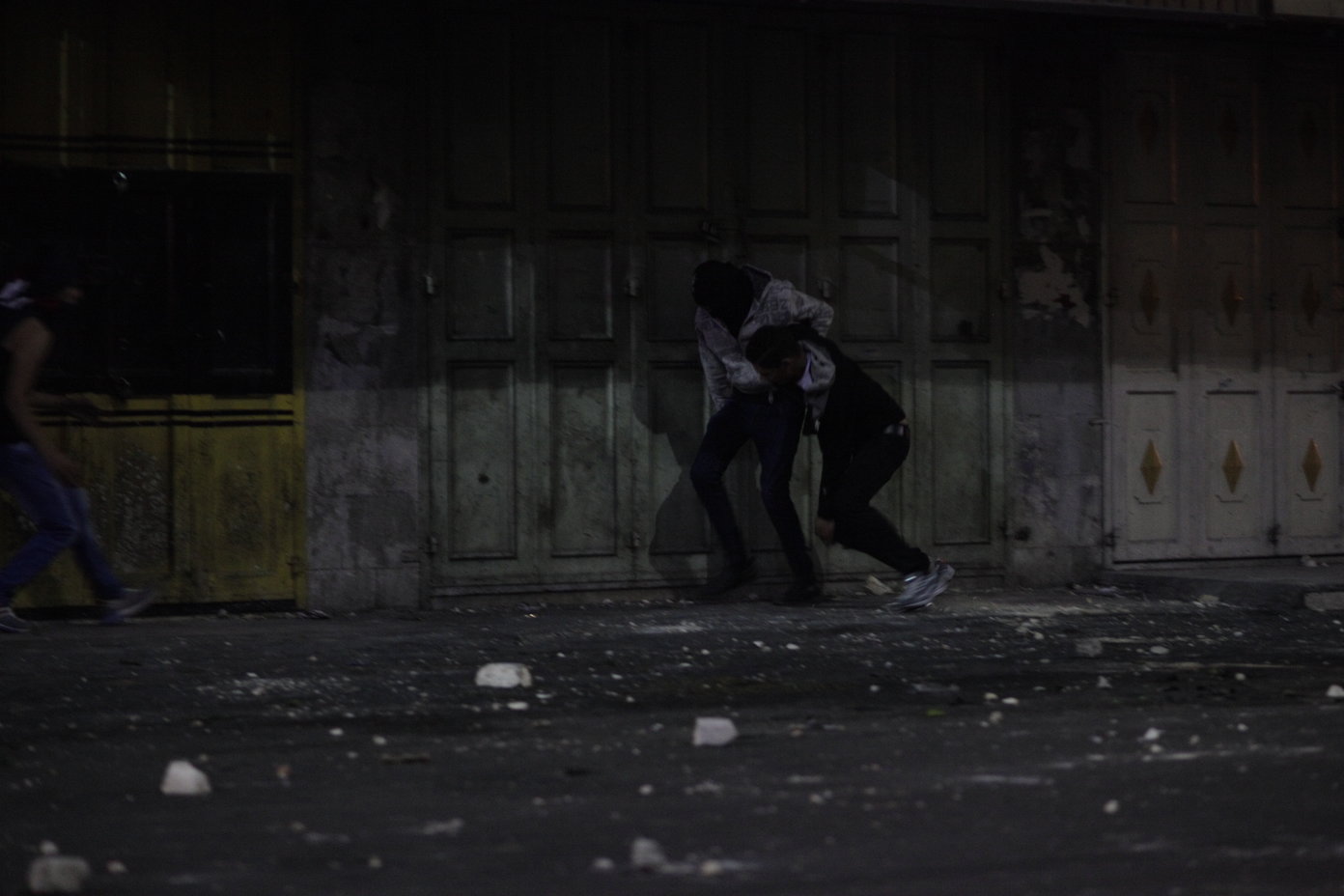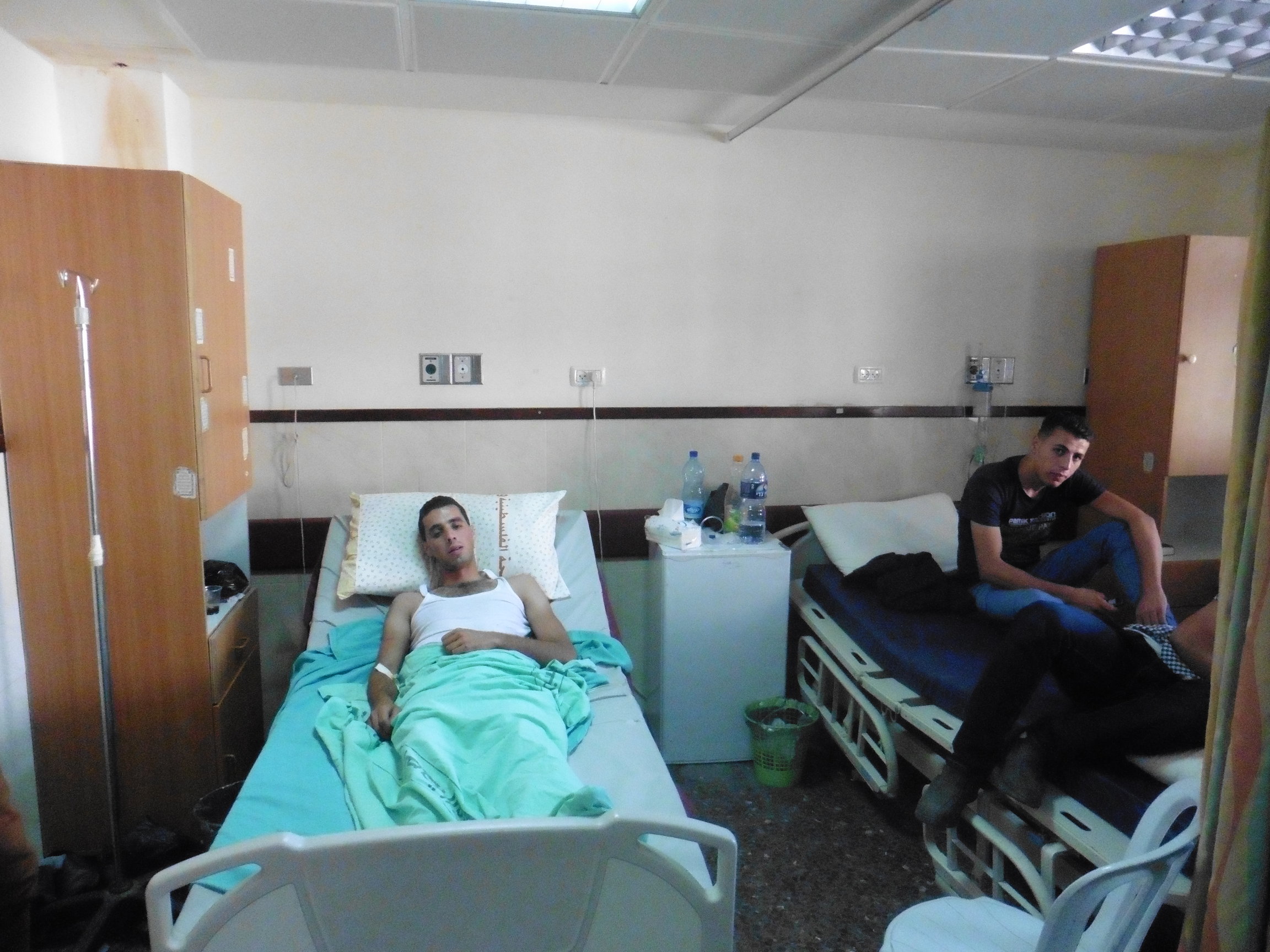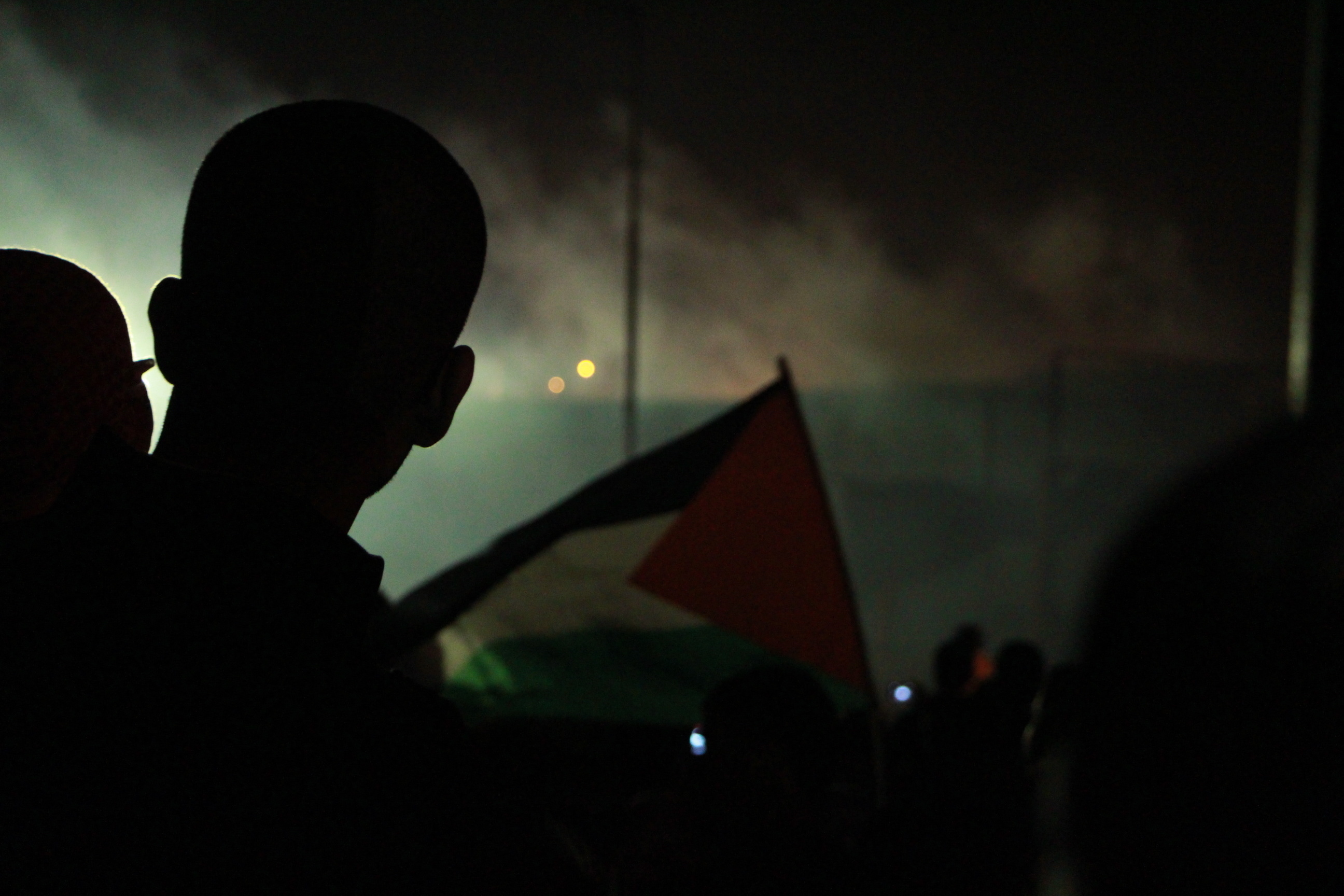Tag: Live Ammunition
-

Live ammo used as ‘crowd dispersal’
31st July 2014 | International Solidarity Movement, Vern | Occupied Palestine On July 29th, Palestinian activists from the Human Rights Defenders Group, as well as several ISM volunteers, went to the Almezan Hospital in Hebron, and met some of the Palestinians recently shot and injured by Israeli soldiers. Some of them were taking part in clashes; others were…
-

Israeli forces fire live ammunition injuring 15 protesters in Beit Furik
27th July 2014 | International Solidarity Movement, Nablus team | Beit Furik, Occupied Palestine At 22:00 in the evening of Friday, July 25th, Israeli forces injured 15 Palestinians during a protest in the village of Beit Furik, which is located fifteen km southeast of Nablus in the northern half of the West Bank. Approximately 2000 protesters were marching towards…
-

Walking to Qalandia
25th July 2014 | International Solidarity Movement | Qalandia, Occupied Palestine We began walking in a crowd, full of men, women, and children. I couldn’t began to estimate how many people were gathered, at least 10,000. The mood was cheerful, people were singing, clapping, holding banners, and waving many Palestinian flags. Cars were driving alongside us…
